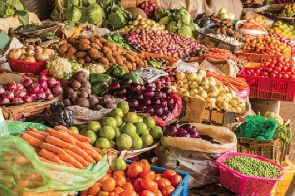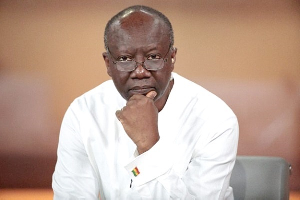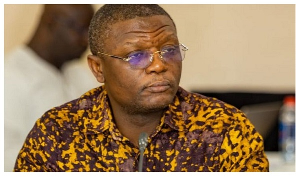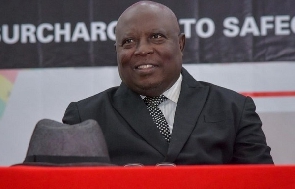The average price of goods and services has, for the first time in a year, recorded its lowest rate – hitting 8.5 percent in April, a development that was largely precipitated by lower food prices.
According to data published by the Ghana Statistical Service (GSS) on Wednesday, year-on-year food prices recorded an inflation rate of 6.5 percent in April, lower than the 10.5 percent recorded the previous month; and still lower than the average of the previous 12 months (12.8 percent). This led to food inflation decreasing in its contribution to total inflation to 33.8 percent; the lowest contribution observed since the CPI basket was rebased in 2018.
On the other hand, the non-food basket saw a marginal rise in inflation as it recorded a year-on-year average of 10.2 percent in April compared with 10 percent the previous month. Out of the 13 divisions in the non-food basket, ten had higher year-on-year inflation than the rolling average over the last 12 months. Housing, for example, recorded a high rate of inflation at 25 percent.
Inflation for imported goods also saw an uptick, as it rose to 7.4 percent from 6.8 percent recorded in March. However, that of locally produced items went the opposite direction as they saw a decline in inflation to 8.7 percent – down from the 11.7 percent recorded in the previous month.
At the regional level, overall year-on-year inflation ranged from 2 percent in the Upper West Region to 12.1 percent in Greater Accra Region. Food inflation was higher than non-food inflation in six of the ten traditional regions (Western, Central, Eastern, Volta, Northern and Upper East). The largest difference in food and non-food inflation was recorded in the Northern Region, 10.7 percent and 5.8 percent respectively.
Effect on policy rate
The Monetary Policy Committee (MPC) of the Bank of Ghana is set to announce its decision on the next policy rate later this month. At its last meeting in February, the committee maintained the rate at 14.5 percent – the sixth straight time it has taken that decision – over heightened inflation risk, among other challenges in the economy requiring cautious measures to be taken to avoid further hikes in the ensuing months.
“After declining in January 2021, headline inflation rose in February slightly above the upper band of the medium-term target – driven mainly by non-food prices. The Bank’s forecast, however, remains broadly unchanged with headline inflation expected to return to the target band in the second quarter of 2021. Risks to inflation in the near-term are broadly balanced, but there are emerging short-term pressures emanating from the rising crude oil prices and the direct and secondary price effects of the revenue measures announced in the 2021 budget,” the MPC stated.
However, with inflation surprisingly dropping to within the Bank of Ghana’s target band of 6-10 percent in April, it may spark a push for the policy rate to also be dropped, even if marginally, in order to ease lending to the private sector.
The Economist Intelligence Unit (EIU) has stated in its country report that it expects a marginal cut of 50 basis points in the policy rate during mid-year, but that will depend on the direction inflation goes.
“Although we expect a small interest-rate cut in 2021 – from 14.5 percent to 14 percent – this is unlikely to happen as early as the March meeting, since inflation remains high. A rate cut is likely mid-year, on the assumption that annual inflation moderates in the coming months,” the EIU March report stated.
Business News of Friday, 14 May 2021
Source: thebftonline.com

















